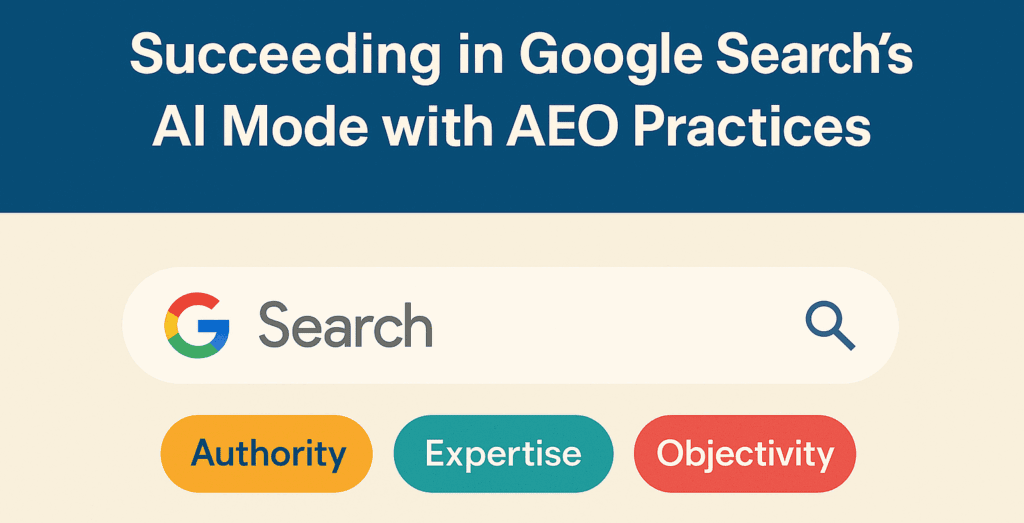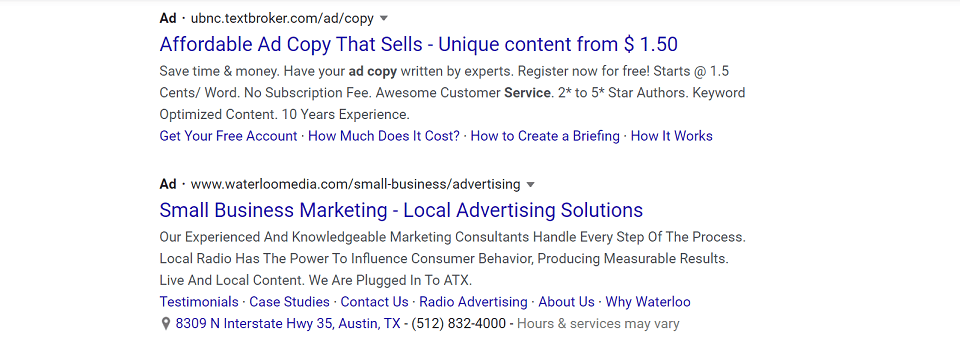Google’s launch of AI Mode marks the biggest shift in how search works since the introduction of RankBrain.
Gone are the days of chasing keyword density, backlink spikes, or page-level technical tricks.
Instead, Google is rolling out an intent-first experience—one that’s conversational, contextual, and driven by AI interpretation of user queries.
That means one thing:
Answer Engine Optimization (AEO) isn’t just a future-friendly strategy.
It’s now the only way to stay visible in an AI-driven search landscape.
This post explains what’s changing, why traditional SEO won’t be enough, and how AEO sets you up to succeed in Google’s new AI Mode.
What Is Google AI Mode?
Google AI Mode is not just a new layout or feature. It’s a fundamental rethinking of search.
Rather than returning a ranked list of links, Google now:
- Interprets queries through natural language processing
- Synthesizes information from multiple sources
- Presents a conversational response that includes citations
- Offers follow-up prompts for continued exploration
In short, it behaves more like an answer engine than a search engine.
That shift puts pressure on your content to:
- Answer real questions
- Provide clear, structured responses
- Demonstrate authority on specific topics
This is exactly what AEO was built for.
Why Traditional SEO Is Losing Power
Old-school SEO was based on surfacing pages that best matched keywords.
It focused on:
- Matching exact search terms
- Earning backlinks for authority
- Tweaking title tags and meta descriptions
But here’s the problem:
AI Mode only cares how many links you’ve earned if your content clearly and directly answers the user’s question as well.
Google’s algorithm is now:
- Interpreting intent, not just keywords
- Prioritizing content utility, not page formatting tricks
- Elevating direct answers, not blog fluff or SEO padding
If your content isn’t built for relevance, clarity, and purpose, it’s invisible.
Enter AEO: Built for the Search Experience Google Just Launched
Answer Engine Optimization was designed with the future of search in mind.
Where traditional SEO targets algorithms, AEO targets usefulness.
AEO content:
- Anticipates user intent
- Structures answers in clean, scannable formats
- Targets questions real users are asking, not just keywords
- Prioritizes clarity and brevity
- Earns visibility by being useful enough to cite, not just list
In an AI-driven search experience, Google rewards content that provides answers, not just traffic bait.
That’s the AEO advantage.
What Google Says (and Doesn’t Say) About AI Mode and Visibility
Google’s own documentation and blog posts are clear about intent:
“Continue to focus on helpful, people-first content. That’s what our ranking systems reward.”
– Google Search Central, May 2025
Translation:
If your page exists just to rank, it’s not going to survive AI Mode.
If your content exists to solve problems, explain concepts, and answer questions, it will.
Google won’t say “AEO” outright. But everything they describe supports what AEO practitioners (like myself) have been saying and doing all along.
How to Shift Focus from SEO to AEO in Practical Terms
If you’ve done SEO for years, here’s how the pivot to AEO looks:
| SEO Practice | AEO Upgrade to Add |
|---|---|
| Optimize for target keyword | Account for search intent and natural questions |
| Write 2,000-word pillar content | Provide concise, scannable, structured answers (like this table) |
| Focus on title tags + metadata | Focus on subheadings, bullet lists, tables, and schema |
| Chase backlinks | Focus on expertise, clarity, and being cited on answer engines AND websites |
| Optimize full pages for single keywords | Optimize sections of content for specific queries |
This isn’t a radical overhaul. It’s a refinement, with more focus on audience needs than algorithmic tricks.
How Google AI Mode Uses AEO-Centric Content
Here’s what happens when your site is AEO-optimized:
- Your content gets parsed more easily
Structured answers and clear headings help Google’s AI extract useful chunks. - You’re more likely to get cited in AI answers
Pages that cleanly explain concepts or provide step-by-step breakdowns often get linked to from AI summaries. - You rank across more micro-intents
Instead of optimizing one page per keyword, you rank for multiple questions and angles inside one asset. - You reduce reliance on rankings alone
Even if you’re not in position #1, your content can power an answer snippet or follow-up recommendation.
That’s long-term visibility built for the next version of Google.
Is AEO a Replacement for SEO? No, It’s the Evolution
You still need technical SEO. You still need fast pages, good UX, and clean architecture.
But when it comes to content strategy and optimization, AEO is no longer optional.
It’s how you stay visible in:
- Google AI Mode
- Answer-rich experiences
- Voice search
- Chatbots and conversational interfaces
- Any AI layer that sits between your content and the user
AEO isn’t an add-on—it’s the foundation of future-proof visibility.
What You Should Do Now
To prepare for Google AI Mode, start here:
✅ Audit your existing content
- Does it clearly answer real questions?
- Are your answers scannable, structured, and free of filler?
- Do you follow N-E-E-A-T-T best practices? (I can audit this for you if you don’t know)
✅ Identify high-intent topics
- Use tools to find People Also Ask questions
- Look at your site search logs
- Interview your sales team or support team
✅ Apply structure
- Add H2/H3 subheadings for clarity
- Use bullet points, numbered lists, and tables
- Wrap key answers in
<p>tags right after headers
✅ Add schema markup
- Use FAQ, How-To, and Q&A structured data to reinforce clarity
- Add structured data for all content types that make sense for your specific website / business
✅ Think in terms of answers, not articles
- Each section should stand on its own
- Each page should solve one core intent thoroughly
Final Thought: Google Just Validated AEO—Now It’s Your Move
For over a year, AEO has been a smart move.
With Google AI Mode, it’s now the move.
If you’re tired of chasing SEO gimmicks that break with every update, now is the time to shift your focus.
- Build for the user
- Structure for understanding
- Answer with clarity
That’s how you stay visible on the search engine Google just morphed into.
Need help applying AEO to your own website before your organic traffic vanishes?
Contact me today and we will get you off the ground faster than you can on your own.
Tommy Landry
Latest posts by Tommy Landry (see all)
- B2B SEO in 2025: Winning Visibility in AI-Curated Buyer Journeys - December 16, 2025
- Local SEO Meets AEO and GEO: How AI Platforms Read Local Authority Signals - December 9, 2025
- What Is an SEO Proposal and What Should It Include? - December 2, 2025





